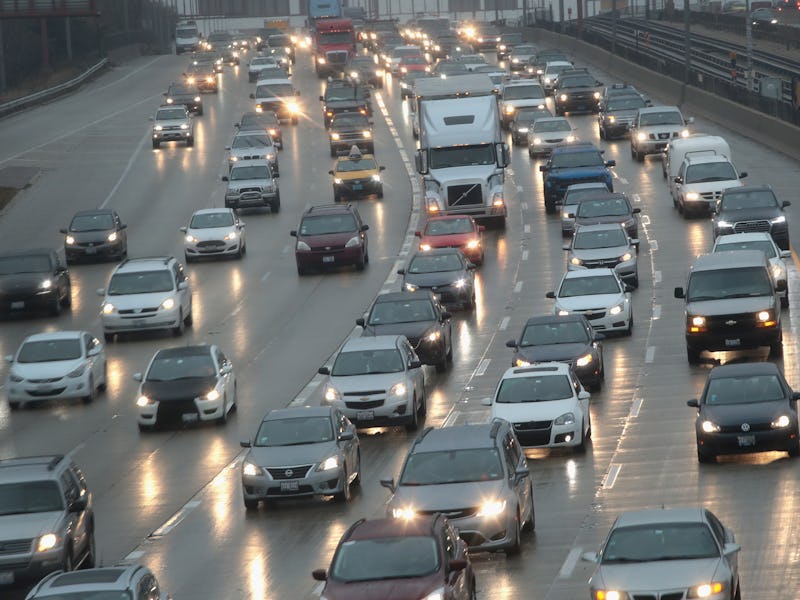Amazon's Self-Driving Car Patent Hopes to Solve the Reversible Lane Problem

Amazon just pre-emptively filed a patent for the idea of using a “roadway management system to tell autonomous cars which lanes to drive in.” You know, just in case anyone else was thinking of doing that.
Most of the time, it seems pretty obvious which lane a car should be in — and your GPS can already tell you if you have a left-handed exit coming up. However, in order to control the commuter traffic, a lot of cities have reversible lanes — lanes that change direction depending on traffic flow.
On Tuesday, Amazon Technologies Inc. had accepted its patent application for a large-scale system of autonomous cars that communicate with each other how to best use those lanes. A team of inventors led by James Curlander, who is in charge of Amazon’s autonomous drone program, filed the patent application in November 2015.
Amazon hasn’t really gotten into the traffic optimization game, but its attempt to solve reversible lanes are an interesting problem. Since autonomous cars aren’t going to be distracted by traffic direction like human drivers, movement through lanes going different directions based on how many cars are going in each direction suddenly becomes a possibility.
The patent is helpfully illustrated with these detailed drawings.
What we are likely to see is that these reversible lanes of traffic allow for more carefully curated streams of people in and out of cities. The management system that Amazon is patenting says that it would be able to maximize a variety of things – toll revenue, car speed, traffic flow in a particular direction.
As each autonomous car approached the highway, the system would give it a lane assignment and send it on its merry way.
Now, it is less likely that regular lanes of traffic will reverse based on the time of day, purely because of all our right-hand exits mean you’d need an algorithm to control weaving cars going different directions. But that said, autonomous cars won’t find that as terrifying as human drivers do, and with the right traffic patterns, something like that might be the most optimal solution.
The fact that Curlander is on the team that filed this suggests that Amazon is maybe working on these kinds of algorithms to optimize flight paths for fleets of these drones, which is a roughly similar problem. All in all, this is definitely not the most ridiculous patent Amazon has ever filed.